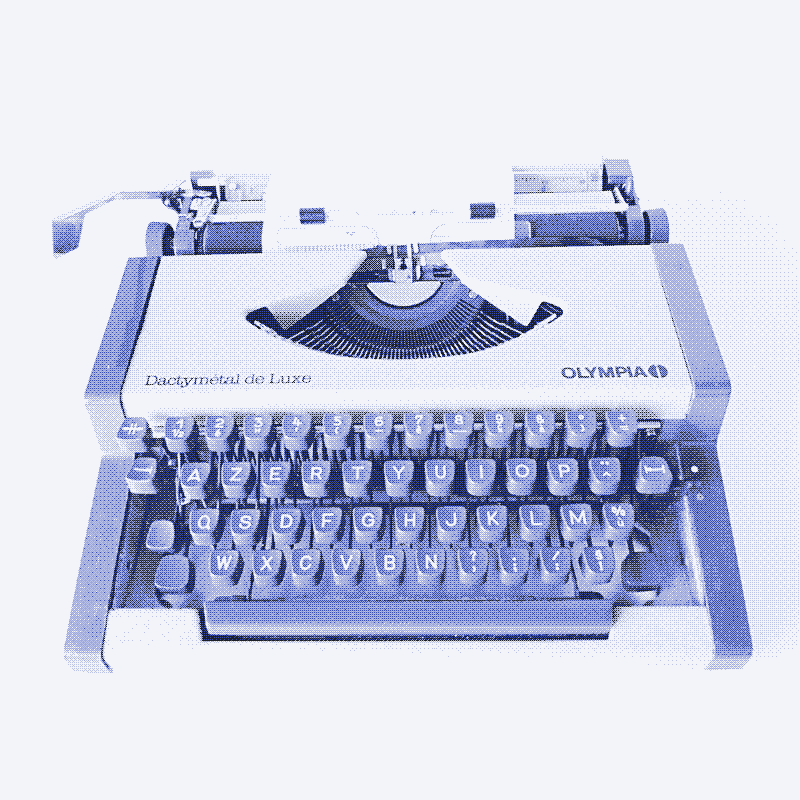
Digital equipment is one of the main drivers behind the quickly growing energy use of modern office work. Could we rethink and redesign office equipment, combining the best of mechanical and digital devices?
The Artisanal Office (Antiquity - 1870s)
Office work has accompanied humankind since the formation of social, economic and political organisation and state administration structures, and the functioning of economic trade. The first office institutions were founded in Antiquity, for example in Egypt, Rome, Byzantium, and China. The period from these early civilisations up to the beginning of the Industrial Revolution was marked by the stability of institutional forms and means of office work. 12
The bulk of office work involved writing — copying out letters and documents, adding up columns of figures, computing and sending out bills, keeping accurate records of financial transactions. 3 The only tools were pen and paper — or rather the quill (the steel pen was invented only in the 1850s) and, before the 1100s in the Western world, stone or clay tablets, papyrus, or parchment.
Consequently, all writing — and copying — was done by hand. To copy a document, one simply wrote it again. Sometimes, letters were copied twice: one for the record, and the other to guard against the possibility that the first might get lost. The invention of the printing press in the late middle ages freed scribes from copying books, but the printing press was not suited for copying a few office documents. 4
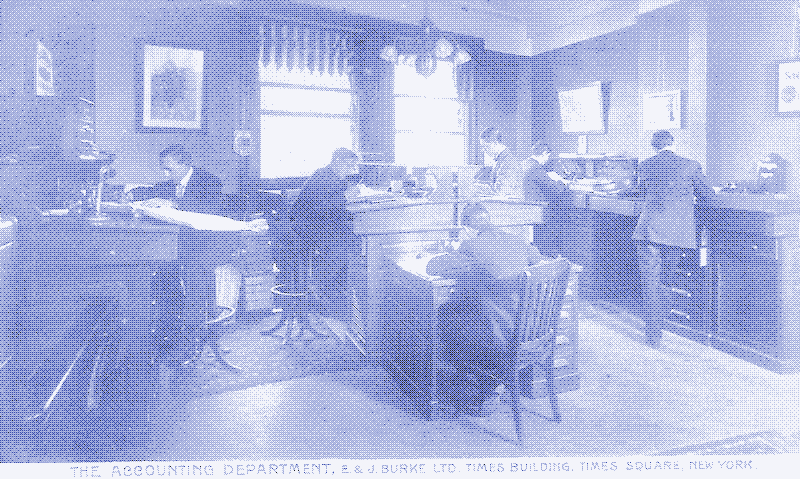
Communication was largely human-powered, too, using the feet rather than the hands: people ran around to bring oral or written information from one person to another, either inside buildings or across countries and continents. Finally, all calculating was done in the head, only aided by mathematical charts and tables (which were composed by mental reckoning), or by simple tools like the abacus (not a calculation machine but a memory aid, similar to writing down a calculation).
The Mechanised Office (1870s - 1950s)
Before the Industrial Revolution, business operated mostly in local or regional markets, and their internal operations were controlled and coordinated through informal communication, principally by word of mouth except when letters were needed to span distances. From the 1840s onwards, the expansion of the railway and telegraph networks in North America encouraged business to grow and serve larger markets, at a time when improvements in manufacturing technology created potential economies of scale. 5
The informal and primarily oral mode of communication broke down and gave way to a complex and extensive formal communication system depending heavily on written documents of various sorts, not just in business but also in government. 5 Between the 1870s and the 1920s, writing, copying, and other office activities were mechanised to handle this flow of information.
The birth of office equipment and systematic management was accompanied by three other trends. The first was the spectacular growth in the number of office workers, mainly women, who would come to operate these machines. The second was the rise of proper office buildings, which would house the quickly growing number of workers and machines. The third was a division of labour, mirroring the evolution in factories. Instead of performing a diverse set of activities, clerks became responsible for clearly defined sub-activities, such as typing, filing, or mail handling.
This article focuses exclusively on the machinery of office work, and more specifically its evolution in relation to energy use. While it’s impossible to write a complete history of the office without taking into account the social and economic context, this narrow focus on machines reveals important issues that have not been dealt with in historical accounts of office work.
Typewriters
Of central importance in the nineteenth-century information revolution was the typewriter, which appeared in 1874 and became widespread by 1900. (All dates are for the US, where modern office work originated). The “writing machine” made full-time handwriting obsolete. Typing is roughly five times quicker than handwriting and produces uniform text. However, the typewriter’s influence went far beyond the writing process itself.
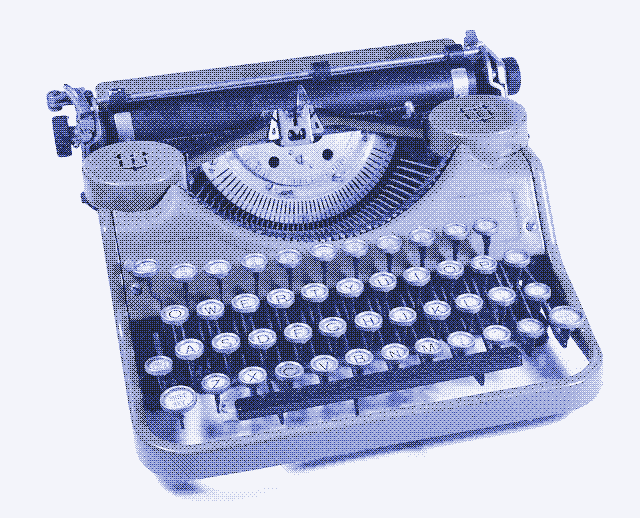
For copying, an even larger gain in speed was obtained in the combination of the typewriter with carbon paper, an earlier invention from the 19th century. This thin paper, coated with a layer of pigment, was placed in between normal paper sheets. Unlike a quill or pen, the typewriter provided enough pressure to produce up to 10 copies of a document without the need to type the text more than once. The typewriter was also made compatible with the stencil duplicator, which appeared around the same time and could make a larger number of copies. Considering the importance of writing and copying, the “writing machine” was a true revolution. 46
The typewriter didn’t reduce the amount of time that clerks spent writing and copying. Rather, the time spent writing and copying remained the same, while the production of paper documents increased. By the early years of the twentieth century, it became clear that old methods of storing documents — stacked up in drawers or impaled on spikes — could not cope with the increasing mounds of papers. This led to the invention of the vertical filing cabinet, which would radically expand the information that could be stored in a given space. 47
Mechanical Calculators
The typewriter quickly evolved into a diverse set of general and special purpose machines, just like the computer would one hundred years later. There appeared shorthand or stenographic typewriters (which further increased writing speed), book typewriters (which typed on bound books that lay flat when opened), automatic typewriters (which were designed to type form letters controlled by a perforated strip of paper), ultraportable and pocket typewriters (for writing short letters and notes while on the road), bookkeeping typewriters (which could count and write), and teletypewriters (which could activate another typewriter at a distance through the telegraph network). 46 The latter two will be dealt with in more detail below.
Mechanical calculating machines were another important tool in the new, mechanised office. “To clerks, mathematical machines are what the rock drill is to the subway labourer”, stated an office management manual from 1919. 8 Mechanical calculating machines could add, subtract, multiply and divide through the motion of their parts. Many of these machines had a typewriter-style keyboard with a column for each digit entered (a “full keyboard”). This allowed numbers to be entered more quickly than on a more compact ten-key device, which became common only from the 1950s. 9
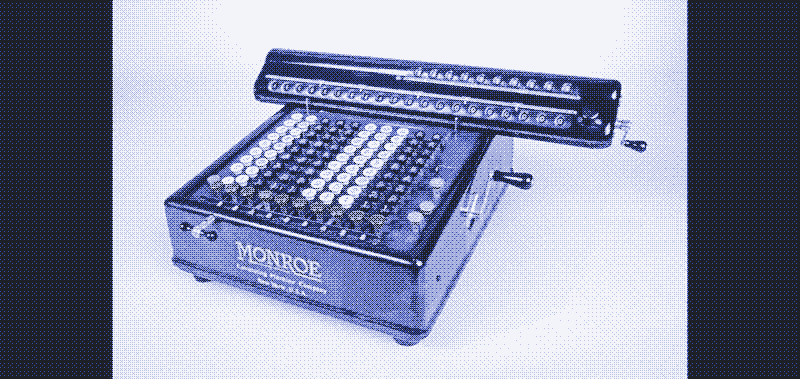
Devices designed especially for addition (and sometimes subtraction) were known as adding machines. Adding up long lists of numbers was typical for many business applications, and in mathematical terms many offices didn’t need to function at any more sophisticated level. The first practical adding machine for routine office work — the Comptometer — was introduced in 1886. 49 At the beginning of the 1900s, the typewriter and the adding machine were combined into the adding typewriter or bookkeeping machine, which became central to the processing of all financial data. 10
Teletypewriters
Obviously, the telegraph (1840s) and the telephone (1870s) also had an enormous impact on office work. The typewriter, beyond its use in business and government offices, also became an essential machine in telegraph offices. Initially, the telegrapher listened to the Morse sounder and wrote the received messages directly in plain language with a typewriter. 11 In the early 1900s, a special typewriter — the “teletypewriter” or “teletype” — was designed to transmit and receive telegraphic messages without the need for an operator trained in the Morse code. 12
When a telegraphist typed a message, the teletypewriter sent electrical impulses to another teletypewriter at the other end of the line, which typed the same message automatically. From the 1920s onwards, teletypewriters became common in the offices of companies, governmental organisations, banks, and press associations. They were used for exchanging data over private networks between different departments of an organisation, a job previously done by messenger boys. 11
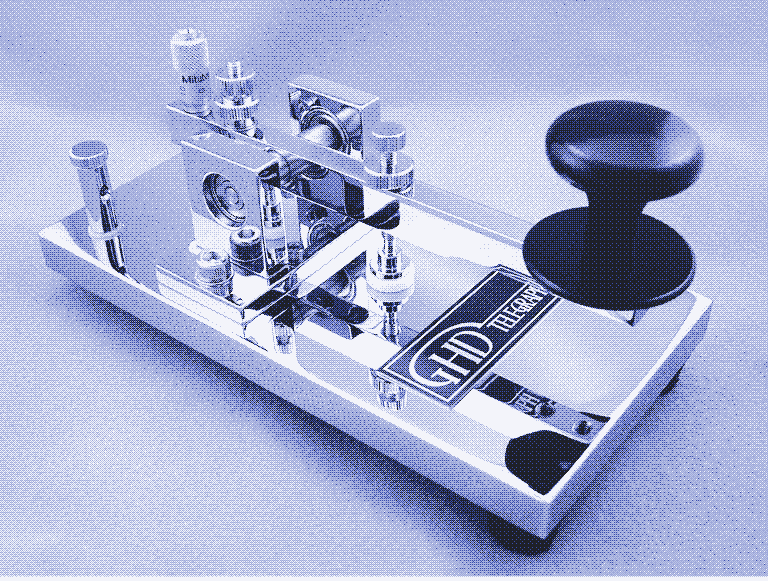
Starting in the 1930s, central switching exchanges were established through which a subscriber could communicate by teletypewriter with any other subscriber to the service, similar to the telephone network but for the purpose of sending text-based messages. This became the worldwide telex-network, now largely demolished. Telex allowed the instantaneous and synchronous transmission of written messages, like today’s chat or email over the internet, or like the exchange of text messages over the mobile phone network (teletypewriters could use the wireless telegraph infrastructure). Telex was also used for broadcasting news and other information, which was received on print-only teletypewriters. 11
The Energy Footprint of the Mechanised Office
The office equipment that appeared in the late nineteenth century was in use until the 1970s, when it was replaced by computers. It is now considered obsolete, but upon a closer look, the superiority of today’s computerised machines isn’t as obvious as you would think. This is especially true when you take into account the energy that is required to make both alternatives work. Although it offered spectacular improvements over earlier methods, and although it could perform similar functions as today’s digital information technology, much of the office equipment described above remained manually powered for decades. 13
The first succesful electro-mechanical typewriter — the IBM Electromatic — was introduced in 1935, and the breakthrough came only in 1961, with the highly succesful IBM Selectric typewriters. Unlike a traditional typewriter, this machine used an interchangeable typing element, nicknamed the “golf ball”, which spins to the right character and moves across the page as you type. 1314
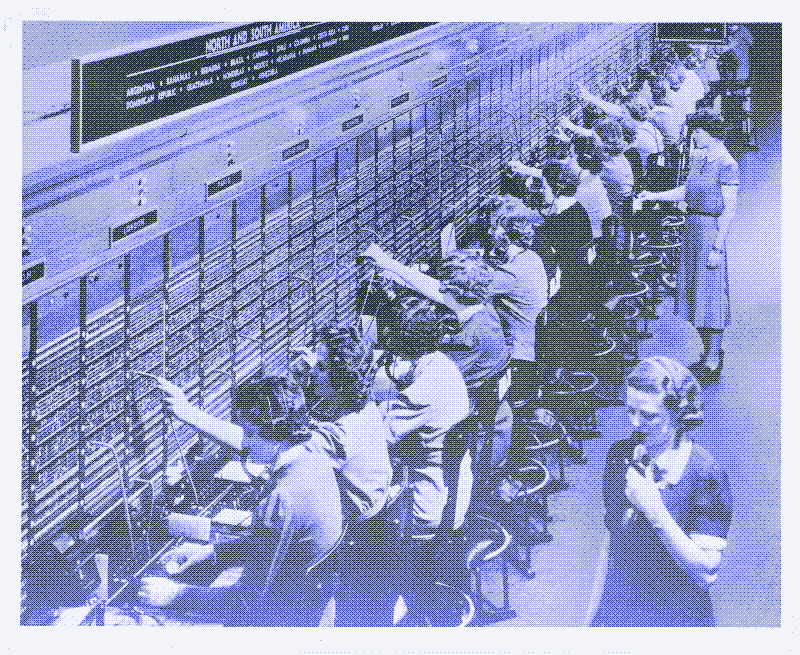
Although electric motors were used on some of the mechanical calculators already in 1901, electrically driven calculators became common only between the 1930s and the 1950s, depending on the type. Pinwheel calculators remained manually operated until their demise in the 1970s. 13
Unlike typewriters and calculating machines, the telephone and the telegraph could not function without electricity, which forms the basis of their operation. However, compared to today’s communications networks, power use was small: until the late 1950s, almost all routing and switching in the telephone and telegraph infrastructure was done by human operators plugging wires into boards. 1115
The Digital Office (1950s - today)
With the arrival of the computer, eventually all office activities became electrically powered. The business computer appeared in the 1950s, although it was not until the mid-1980s that this ‘machine’ became a common office tool. Reading, writing, copying, data processing, communication, and information storage became totally dependent on electricity.
Screens, Printers and Scanners
The computer took over the tasks of other machines in the office such as calculating machines, bookkeeping machines, teletypewriters, and vertical filing cabinets. In fact, on the surface, one could say that the computer is the office. After all, its dominant metaphor is taken from office work: it’s got a “desktop”, “files”, “folders”, “documents”, and a “paper bin”. 16 Furthermore, it can send and receive “mail”, make phone calls and accomodate (virtual) face-to-face meetings.
On closer inspection, however, it becomes clear that the arrival of the computer also led to the appearance of new office equipment, which is just as essential to office work as the computer itself. The most important of these devices are printers, scanners, monitors, and new types of computers (data servers, smartphones, tablets). All these machines require electricity.
Monitors and data servers appeared because the computer introduced an alternative information medium to paper, the electronic format. Printers and scanners appeared because this new medium, contrary to expectations, did not replace the paper format. Although documents can be read, written, transmitted, stored and retrieved in a digital format, in practice both formats are used alongside each other, depending on the task at hand.
In spite of the computer, and later the internet, paper has stubbornly remained a key feature of office life. A 2012 study concluded that “most of the offices we visited were more or less full of paper”. 17 This means that the use of resources further increases: to the electricity use of the digital devices, we also have to add the resources involved in making paper.

In their 2002 book The Myth of the Paperless Office, Abigail Sellen and Richard Harper investigate why and how office workers — especially the growing group of knowledge workers — are still using paper while new, digital technologies have become so widely available. 7
They argue that office workers’ reluctance to change is not simply a matter of irrational resistance: “These individuals use paper at certain stages in their work because the technology they are provided with as an alternative does not offer all they need.” Obviously, digital documents have important advantages over paper documents. However, paper documents also have unique advantages, which are all too often ignored.
For example, it was found that office workers actively build up different kinds of paper arrangements on or near their office desks, reminding them of different matters and preparing them for specific tasks. Computers do not reproduce this kind of physical accumulation. Information exchange, for example in meetings, is another common office practice in which paper is used. Actions performed in relation to paper are, to a large extent, made visible to one’s colleagues, facilitating social interaction. When using a laptop, it’s impossible to know what other people in a meeting are looking at. 717
Welcome to the Paperless Office
Most important, however, is the point that paper tends to be the preferred medium for reading documents. Paper helps reading because it allows quick and flexible navigation through and around documents, reading across more than one document, marking up a document while reading, and interweaving reading and writing — all important activities of modern knowledge work. 7
Although some electronic document systems support annotation, this is never as flexible as pen and paper. Likewise, moving through online documents can be slow and frustrating — it requires breaking away from ongoing activity, because it relies heavily on visual, spatially constrained cues and one-handed input. Opening multiple windows on a computer screen doesn’t work for back-and-forth cross-referencing of other material during authoring work, both because of slow visual navigation and because of the limited space on the computer screen. 7
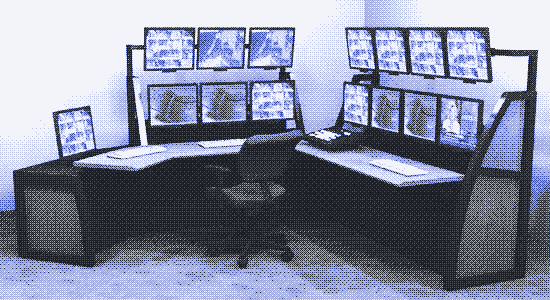
The use of multiple computer screens (and the use of multiple computers at the same time) is an attempt to overcome the inherent limits of the digital medium and make it more “paper-like”. With multiple screens, it becomes possible to interweave reading and writing, or to read across more than one document. Research has shown that work productivity increases when office workers have access to multiple screens — a result that mirrors Sellen and Harpers findings about the importance of paper. 18192021
The use of multiple monitors is rapidly increasing in the workplace, and the increase in “screen real estate” is not limited to two screens per office worker. 1921 Fully integrated display sets of twelve individual screens are now selling for around $3,000. 22 A recent innovation are USB-powered, portable monitors, aimed at travelling knowledge workers but just as handy at the office. Because these monitors have their own set of dedicated hardware, rather than putting all the work of another screen on the computer itself, it’s possible to connect up to five portable screens to a laptop. 23 A multi-touchscreen keyboard, already on the market, could solve the annotation issue.
The Energy Footprint of the Digital Office
The problem with extra screens is that they increase energy use considerably. Adding a second monitor to a laptop roughly doubles its electricity use, adding five portable screens triples it. A 12-screen display with a suited computer to run it consumes more than 1,000 watt of power. If paper use can be reduced by introducing more and more computer screens, then the lower resource consumption associated with paper will be compensated for with a higher resource consumption for digital devices.
A similar switcheroo happened with information storage and communication. Digital storage saves paper, storage space and transportation, but in order to make digital information readily accessible, dataservers (the filing cabinets of the digital age) have to be fed with energy for 24 hours per day. And just as the typewriter and carbon paper increased the production of documents, so did the computer. Especially since the arrival of the internet, people can access more information more easily than ever before, resulting in an increase of both digital and paper documents. Ever cheaper, faster and better quality printers and copiers — all digital devices — keep encouraging the reproduction of paper documents. 7

The computer increases energy use in many different ways. First of all, digital technology entails extra energy use for cooling — the main energy use in office buildings. A 2011 study, which calculated the energy use of two future scenarios, concluded that if the use of digital technology in the office keeps increasing, it would become impossible to design an office building that can be cooled without air-conditioning. 24 In the “techno-explosion” scenario, all office workers would have two 24’’ computer screens, a 27’’ touchscreen keyboard, and a tablet. The perhaps extreme scenario also includes one media wall per 20 employees in the office break zone.
On top of operational energy use and cooling comes a higher energy use during the manufacturing phase. The energy used for making a typewriter was spread out over many decades of use. The energy required for the production of a computer, on the other hand, is a regularly reoccuring cost because computers are replaced every three years or so. The internet, which has largely engulfed the telephone and telegraph infrastructure, has become another major source of power demand. The network infrastructure, which takes care of the routing and switching of digital information, uses roughly as much energy as all end-use computers connected to the internet combined.
The Lower Energy Office of the Future
The typewriter was just as revolutionary in the 1900s as is the computer today. Both machines transformed the office environment. However, when we consider energy use, the obvious difference is that the second information revolution was accomplished at much higher costs in terms of energy. So, maybe we should have a good look at pre-digital office equipment and find out what we can learn from it.
During the last ten years or so, the typewriter has seen a remarkable revival with artists and writers, a trend that was recently documented in The Typewriter Revolution: A typist Companion for the 21st Century (2015). 14 Like paper, the typewriter has many unique benefits. Obviously, a manual typewriter requires no electricity to operate. If it’s built before the 1960s, it’s built to outlast a human life. A typewriter doesn’t become obsolete because its operating system is no longer supported, and it can be repaired relatively easily using common tools. If we compare energy input with a simple measure of performance, the typewriter gets a better score than the computer.
There are also practical advantages. A typewriter is always immediately ready for use. It needs no virus protection or software updates. It can’t be hacked or spied upon. Finally, and this is what explains its success with writers and poets: it’s a distraction-free, single-purpose machine that forces its user to focus on writing. There are no emails, no news alerts, no chat messages, no search engines and no internet shops.
![The Typewriter Manifesto. Source: The Typewriter Revolution [^14].](https://solar.lowtechmagazine.com/2016/11/why-the-office-needs-a-typewriter-revolution/images/dithers/typewriter-manifesto_dithered.png)
For office workers, and for knowledge workers in particular, a typewriter could be just as useful as for a poet. Computers may have increased work productivity, but nowadays they are “connected to the biggest engine of distraction ever invented”, the internet. 14 Studies indicate that web web activities are among the main distractions that keep office workers away from productive work. 25 26 Many online applications are especially designed to be addictive. 27
A typewriter also forces people to write differently, combating distraction within the writing process itself. There is no delete key, no copy-and-paste function. With the computer, editing “became a part of writing from the very start, making the writer ever anxious about anything that just took place”. 28 The typewriter, on the other hand, forces the writer to think out sentences carefully before committing them to paper, and to keep going forward instead of rewriting what was already written. 14
The “Back-in-Time” Sustainable Office
How can we insert the common sense of the typewriter — and other pre-digital equipment — into the modern office? Basically, there are three strategies. The most radical is to replace all our digital devices by mechanical ones, and replace all dataservers with paper stacked in vertical filing cabinets, in other words we could go back in time.
This would surely lower energy use, and it’s the most resilient option: for all their wonders, computers serve absolutely no purpose when there’s no electricity. Nevertheless, this is not an optimal strategy, because we would lose all the good things that the computer has to offer. “The enemy isn’t computers themselves: it’s an all-embracing, exclusive computing mentality”, writes Richard Polt in The Typewriter Revolution. 14
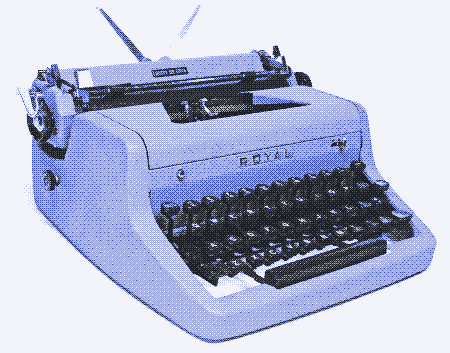
Another strategy is to use mechanical office equipment alongside digital office equipment. There’s some potential for energy reduction in the combined use of both technologies. For interweaving reading and writing, the typewriter could be used for writing and the computer screen for reading, which saves an extra screen and a printer. A typewriter could also be combined with a low energy tablet instead of a laptop or desktop computer, because in this configuration the computer’s keyboard is less important.
Once finished, or once ready for final editing in a digital format, a typewritten text can be transferred to a computer by scanning the typewritten pages. The actual typewritten text can be displayed as an image (“typecasting”), or it can be scanned with optical recognition software (ORC), which converts typewritten text into a digital format. This process implies the use a scanner or a digital camera, however these devices use much less energy than a printer, a second screen, or a laptop. By reintroducing the typewriter into the digital office, the use of the computer could thus be reduced in time, while the ’need’ for a second screen disappears.
The Low-tech Sustainable Office
The third strategy is to rethink and redesign office equipment, combining the best of mechanical and digital devices. This would be the most intelligent strategy, because it offers a high degree of sustainability and resilience while keeping as much of the digital accomplishments as possible. Such a low-tech office requires a redesign of office equipment, and could be combined with a low-tech internet and electricity infrastructure
E-Typewriters
For low-tech writing, a couple of devices are available. A first example is the Freewrite, a machine that came on the market earlier this year after a succesful crowdfunding campaign. 29 Like a typewriter, it’s a distraction-free machine that can only be used to write on, and that’s always instantly ready to be used. Unlike a typewriter, however, it has a 5.5’’ e-paper screen, it can store a million pages, and it offers a WiFi-connection for cloud-backups. Files are saved in plain text format for maximum reliability, minimal file size, and longest anticipated support.
Apart from a backspace key, there is no way to navigate through the text, and the small screen only displays ten lines of text. Drafting and editing have been separated with the intent to force the writer to keep going. For editing or printing, the text is then transferred to a computer using the WiFi connection.

The device is stated to have a “4+ week battery life with typical usage”, which is defined as half an hour of writing each day with WiFi turned off. That’s a strange way to communicate that the machine runs 14 hours on one battery charge, and when I asked the makers how much power it needs they answered that they “don’t communicate this information”. Nevertheless, enabling 14 hours of writing already beats the potential of the average laptop by a factor of three.
Hardware Word Processors
Another type of digital typewriter is the hardware word processor. Before word processing became software on a personal computer in the 1980s, the word processor was a stand-alone device. Like a typewriter, a hardware word processor is only useful to write on, but it has the added capability of editing the text before printing. Although hardware word processors work and look like computers, they are non-programmable, single-purpose devices. 3031
The great advantage of a hardware word processor is that both writing and editing can happen on the same machine — a typewriter or a machine like the Freewrite requires another machine to do the editing (unless you write multiple versions of the same text). The hardware word processor virtually disappeared when the general-purpose computer appeared. One notable exception is the Alphasmart, which was produced from 1992 until 2013.
This rugged portable machine is still widely traded on the internet and developed a cult following, especially among writers. The Alphasmart was conceived as an affordable computer for schools, but the low price was not its only appeal. The machine responded to the need for a tool that would make kids concentrate on writing, and not on editing or formatting text. Although it has full editing capabilities, the small screen (showing 6 lines in the lastest model) invites writing rather than excessive editing.
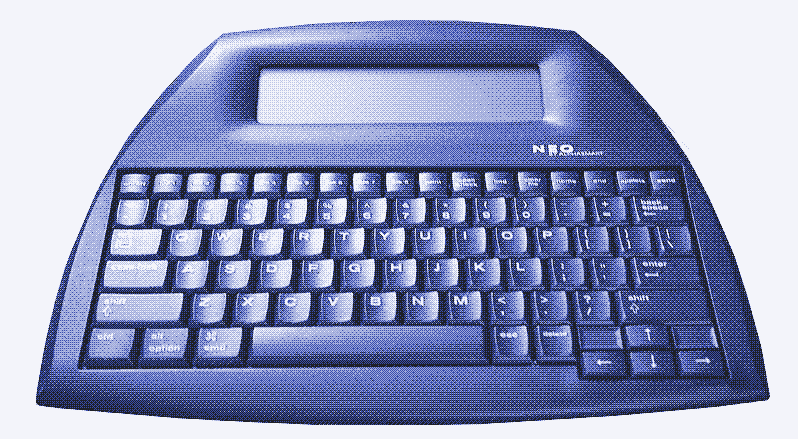
The Alphasmart is especially notable for its energy efficiency, using as little electricity as an electronic calculator. The latest model could run for more than 700 hours on just three AA-batteries, which corresponds to a power use of 0.01 watt. The machine has a full-sized keyboard but a small, electronic calculator-like display screen, which requires little electricity. It has limited memory and goes into sleep-mode between keystrokes. The Alphasmart can be connected directly to a printer via a USB-cable, bypassing a computer entirely if the aim is to produce a paper document. Transferring texts to the computer for digital transmission, storage or further editing also happens via cable. 3233
Interestingly, Alphasmart released a more high-tech version of the device in 2002, the Alphasmart Dana. It was equipped with WiFi for transmitting documents, it had 40 times more memory than its predecessor, and it featured a touchscreen. The result was that battery life dropped twentyfold to 25 hours, clearly showing how quickly the energy use of digital technology can spiral out of control — although even this machine still used only 0.14 watts of power, roughly 100 times less than the average laptop. 3233
Of course, a low-tech office doesn’t exclude a real computer, a device that does it all. A small tablet with a wireless keyboard can be operated for as little as 3W of electricity and many of the capabilities of a laptop (including the distractions). An alternative to the use of a tablet is a Raspberry Pi computer, combined with a portable USB-screen. Depending on the model, a Raspberry Pi draws 0.5 to 2.5 watts of power, with an extra 6 or 7 watts for the screen. A Pi can serve as a fully functional computer with internet access, but it’s also very well suited for a single-purpose, distraction-less word processing machine without internet access. Such machines could be powered with a solar system small enough to fit on the corner of a desk.
Dot-Matrix Printers
Unless we revert to the typewriter, the office also needs a more sustainable way of printing. Since the 1980s, most printing in offices is done with a laser printer. These machines require a lot of energy: even when we take into account their higher printing speed, a laser printer uses 10 to 20 times as much electricity than a inkjet printer. 34 Unfortunately, inkjet printers are much more expensive to use because the industry makes a profit by selling overpriced ink cartridges.
Until the arrival of the laser printer, all printing in offices was done by dot-matrixprinters. Their power use and printing speed is comparable to that of inkjetprinters, but they are much cheaper to use — in fact, it’s the cheapest printing technology available. Like a typewriter, a dot-matrixprinter is an impact printer that makes use of an ink ribbon. These ribbons are sold as commodities and cost very little. Unlike a typewriter, the individual characters of a matrix printer are composed of small dots.
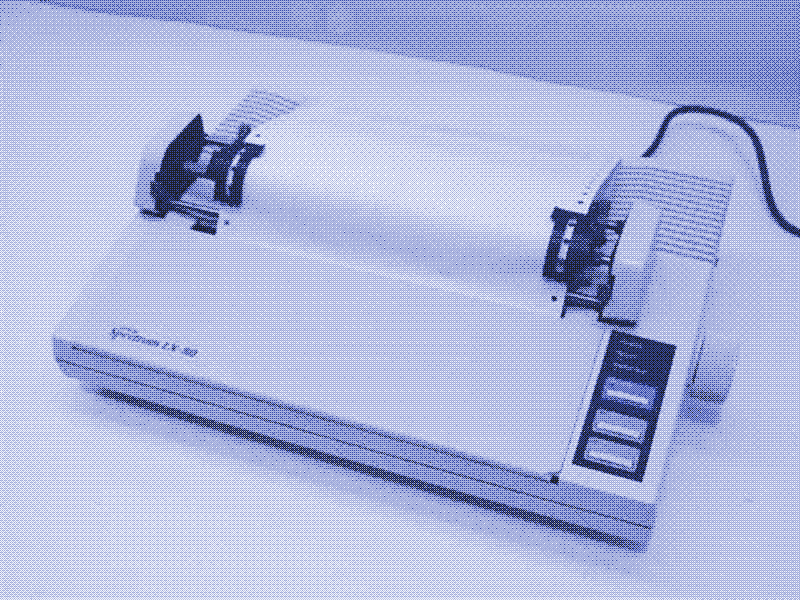
Dot-matrix printers are still for sale, for applications where printing costs are critical. Although they’re not suited for printing images or colours, they are perfect for the printing of text. They are relatively noisy, which is why they were sometimes placed under a sound-absorbing hood. There is no practical low-tech alternative for the copier machine, which only appeared in the 1950s. However, since a photocopier is a combination of a scanner and a laserprinter, the copying of paper documents could happen by using a combination of a computer with a scanner and a dot-matrix or inkjet printer.
The information society promises to dematerialise society and make it more sustainable, but modern office and knowledge work has itself become a large and rapidly growing consumer of energy and other resources. Choosing low-tech office equipment would be a great start to address this problem. Such a strategy is especially significant in that the energy use goes far beyond the operational electricity use on-site.
Thanks to Elizabeth Shove, who pointed me to some of the most important references, and to Karolien Buurman and Thomas Op de Beeck, who made me (re)discover the dot-matrixprinter.
Reactions
To make a comment, please send an e-mail to solar (at) lowtechmagazine (dot) com. Your e-mail address is not used for other purposes, and will be deleted after the comment is published. If you don’t want your real name to be published, sign the e-mail with the name you want to appear.
Reactions
Sherwood Botsford
Hmm. Some qualifying statements:
While databases often run 24/7 they are very efficient. A typical computer can handle 1 to 3 4U rackmount disk packs each with 20 disks. If you are running some form of redundancy you still end up with 100 to 150 terabytes per cpu. A spinning disk that’s not active is something like 4 watts. Active it’s about 3 times that.
My computer is a 4 core Mac Pro. I’ve got 4 internal drives, and 2 external ones. With the monitors off it consumes 120 watts. With the monitors on it uses 200 watts. I run three 23 inch 1920 x 1280 pixel monitors, and find that quite sufficient. I’m more of a power user than most people, as I do a fair bit of photo editing. For the surf and write crowd, a dual screen setup and lighter weight cpu would be ample. It would be easy to bring the total power down to 75W/desk
By comparison the typical T8 fluorescent bulb in an office fixture consumes 32 watts per 4 foot bulb. These are distributed at a rate of more than one per desk, so we are already at the stage where the room lighting takes more power than the computers in the room.
I’ve written essays on electric typewriters. You will rip my word processor out of my dying hands. And then I will haunt you. I don’t think linearly enough to use a typewriter. I took me a minimum of 5 drafts to get a “B” grade essay, and often twice that many.
The design of office buildings at present is dehumanizing. With large buildings they need to cool them year round. Just takes less cooling in the winter. But again, it’s not clear if this is waste heat from the lights/photocopiers/printers as much as the computers. Smaller buildings are more problematic for winter use.
Carbon paper! Spare me. If I NEVER see another carbon it will be an hour too soon. The time to file, retrieve…
Most paper is printed, look at, discarded. Little is filed anymore. It’s cheaper to reprint it, than to file it. What we need is a print media that is long term re-useable. Something that you could use a magic brush and brush off the letters.
The electronic book needs to be integrated into our systems. These systems run for months on a set of batteries. Even as a power user, with 3 monitors I often have manuals 3 deep. Having one screen that was capable of updating fast, and could track mouse movements, and one screen that used e-paper technology that could display manuals would be a godsend.
Jan Steinman
You left out this lovely gem:
http://www.vcalc.net/images2/Curta-Image08b-232x415.png
The Curta could add, subtract, multiply, and divide, to eleven or fifteen digits (depending on model) all while fitting in your palm! With no batteries!
I would love to have one, but they run from $700 for a beat-up one to perhaps three times that much for a mint one.
So I make due with another manual tool you neglected to mention, at about 4% of the cost of the cheapest Curta:
https://i.ytimg.com/vi/OASia3qR1XY/maxresdefault.jpg
I have a Gilson like this one, but it better shape. This 9" disk has the equivalent resolving power of a 24" linear slide rule.
(PS: I also use an automatic mechanical chronograph watch and a 35-day wind-up wall clock.)
Request for an urban transit blog post
I look forward to articles on this blog. I consider this blog to be a jewel. I have found some of the blog postings on this blog to be extremely illuminating. The author has demonstrated that he is knowledgeable, clever, insightful, imaginative, and painstakingly diligent.
But this blog post is silly. Very silly.
Although its market share is generally still small, inexpensive renewable energy technology is already widely deployed around the world today primarily in the form of hydro, wind, and solar. Furthermore, its implementation is expanding rapidly around the world.
In the case of energy in particular and goods and services in general, the world does not have a production problem; the world has a fairness problem (justice problem).
The world is awash is a sea of plenty that is horded by the powerful few. The problems of fair resource distribution aren’t essentially technological they are essentially political/social/economic/religious. And these problems are not new. They are ancient.
If the poor were to conserve, and the rich were to simply take that which was saved for themselves then what would be the author’s answer: conserve more? This blog posting reminds me of the saying, “When you are a hammer, every problem looks like a nail.
This blog posting reminds me of the absurd dystopian book called “The Population Bomb” https://en.wikipedia.org/wiki/The_Population_Bomb and the ridiculous dystopian nonsense proffered by James Howard Kunstler https://en.wikipedia.org/wiki/James_Howard_Kunstler
This blog posting seems like a like an extreme liberal version of the extreme conservative “preppers” who proclaim we need to stock up on guns and have a huge cache of food to survive the upcoming apocalypse.
Some of the technology blog postings on this blog have illuminated me and shaped my thinking. I am grateful to have read them. But I dislike the barely disguised, misguided political claptrap of this blog posting. It is half-baked and nonsensical.
I am half-anticipating a future blog posting on the virtues of anarcho-syndicalism vs fascism as they relate to George Orwell’s “Homage to Catalonia” https://en.wikipedia.org/wiki/Homage_to_Catalonia I can imagine the article concluding with a sentence written in Catalan about how the great and righteous masses in Barcelona must unite to throw off 500+ years of suffering under the yoke of the craven and wicked Madrileños.
Instead of crafting veiled political/social/economic prognostications in the guise of a reasonable technological blog postings, I would like to see this remarkably talented and capable author write a blog posting about an inexpensive form of automated urban transit powered by electricity in which people and freight move about in cabins that are, say, five to eight meters above the ground.
We don’t need Elon Musk’s Hyperloop or colonies of Earthlings living on a utopia such as Pluto. (Who says it’s not a planet? and why only aim for Mars? If we are going to “disrupt” our solar system let’s dream really, really big!).
However, we do need something better than electrically powered driverless vehicles replacing conventional internal combustion vehicles. “Driverless cars"are little more than an attempt by Silicon Valley companies to barge in on the lucrative auto finance market.
In much of the world, freight trains chug across continents at, say around 50 kilometers per hour much like they have for over a hundred years. They were an excellent solution. We need a similarly excellent solution built with appropriate technology—some of it pre-19th century technology, some of it 19th century technology, some of it 20th century technology, and some of it 21st century technology— to convey people and freight within cities, towns, and villages that moves about at, say, five to eight meters above the ground.
Mattis Männel
I’d like to say something about obsolete operation systems (OS), hardware (and other software) that would require you to buy a new computer.
I have a 2007-made MacBook which I got from my sister because she didn’t need it any more and it wasn’t running the most common applications nicely without lags, long delays and so on. There where also no free upgrade/updates of the MacOS X available (they would have made it even slower) and formation the disk didn’t help.
When I got it I installed a GNU/Linux distribution, ubuntu to be precise. The installation was as simple as any OS installation and everything (besides the camera) worked very well after the installation. I get all updates and upgrades for free (both as in free beer and as in freedom), there is no need for a virus protection on GNU/Linux based OSes and even 20 years old hardware is supported.
I also removed the CD/DVD-drive from the MacBook which made it ~150g lighter and I mostly use it without the battery.
Considering power consumption: I’ve never measured it, but the power supply says 60W but that’s on charging battery and full-power operation.
To bring it into a nutshell: A GNU/Linux distribution can deobsolete your obsolete computer. If your computer is relatively slow (over 10 years old or a netbook/low-end laptop) you should consider a lightweight distribution (they have a simpler interface with fewer animations and other cosmetics).
disc_writes
Also, why do even low-tech gadgets have WI-FI? What’s wrong with a cable?
Kristof
With history as a guide, it suggests that this revolution will lead to more consumption, not less. The people with a typewriter will also have a computer. And next to the dot-matrixprinter there will also be a laser printer…
Vincent
disc_writes > I handle lots of documents in my work and I often find myself thinking - “People used to do this kind of things without PCs, with typewriters and paper.
Yes, with a much lower productivity. There’s no free lunch.
If one day there are no computers anymore
Not “if” : “when”. Fossil fuel and metals are finished resources (metals as used in electronics and today’s cars are de facto non-recycable.)
http://cassandralegacy.blogspot.fr/2014/07/the-age-of-diminishing-technological.html
Tom
I think the benefits of email, web sites and video will outweigh going back to typewriters and paper.
http://www.projectcaua.org provides a lower power, lower heat setup. John Hall’s presentation talks about why the power’heat reduction is important in Brazil and other tropical environs http://www.usenix.org/conference/lisa11/project-cau%C3%A3
In my children’s schools the students are using chromebooks and a schoolwide google apps (business?) to do something similar with wireless internet access.
OldGreyBeard
I work from my home office & most of the heating comes from the PCs (two desktops & one laptop) and ancilliary equipment. This is welcome at this time of year but less so in Summer.
When I started work in the late 1970s/early 1980s there was much less office equipment. Typing was done by women in typing pools and cut & paste was literally what you did to prepare docs for typing.
At home I had a manual typewriter which was replaced by a BBC Micro with dot matrix printer in the late 1980s which itself was replaced by several generations of PC & printer. The typewriter still works & is still used for jobs it is very good at.
I wouldn’t want to go back to the pre word processor era but the manual typewriter has much to recommend it. It is very good for address labels, envelopes & form filling. I also use it for typing up notes which can if necessary be scanned in with OCR software. It works anywhere, can be used in full sunlight and can not be hacked or get a flat battery. Its easy to maintain & repair.
So much modern technology is not very resilient. The electric goes off and that’s it. If the broadband goes down offices grind to a halt.
I think we need to build more resilience into our lives and be less dependent on fragile networks to supply us with electricity, food, communication etc.
Baksa Péter
I think you forgot one of the most important office tools: email. One don’t have to wait until the other party can pick up the phone, and the email can be archived on the recipient side. Why add paper to this workflow?
What I like is the Rapsberry idea, word processing with computers is not evil, we just don’t need that much computer power to do it. Coupling that with some e-paper screen would be wonderful: noiseless, small, portable, yet easy to update functionality.
Matthias
Going back would mean double the work force.
Yes you can use carbon paper to duplicate your text but you cannot make even one typo. OR you have to use the correction paper ten times. Typing was a very tedious jobs and so even lower charges had their secretary which typed the text. Now everybody is typing their own texts.
Also to arrange a meeting with several people required many phone calls. Again the secretary would call another secretary to find a suitable date.
Ordering parts was very troublesome and time consuming. For transaction you had to queue in the bank or post office.
There was internal mail. Guys just running around the office and collecting and distributing papers. If a few persons had to read and sign a Paper it took its time until everybody signed it.
And dot matrix printers. Come on they are just rubbish and thats why they disappeared. Even thermoprinters are better. Also you forgot to mention telex and especially the telefax which allowed to send pictures and characters which couldn’t been made by a typewriter. How about the Asian market? Typewriters only work for languages which have an alphabet.
Computers save so much time and can do the task you would need a dozen of other devices.Even with two screens you can operate them with less than 100W. Just replace the light bulbs with LED and you will use less energy than 40 years ago.
Greg
Speaking as a professional technologist of @ 30 years, and one who studies technology history in diverse fields:
The key problems here are energy consumption, obsolescence, and user experience (distraction vs. focus).
First, recent studies support the premise that a black-and-white screen causes less distraction than a color screen (sorry I don’t have a citation for this). Thus one can envision a device with internet connectivity and a large enough screen (21" diagonal) to enable seeing two pages side-by-side or one full page for reading and one full page for writing. Using “electronic paper” technology, the energy consumption would be a small fraction of what it is with a color screen.
The obsolescence of devices and software is a moral obscenity of nonrenewable materials wastage, and is also hated passionately by device users and technical workers alike (with rare exceptions that highlight the rule). It serves one primary purpose, and that is the profit of the manufacturers, in an economic ecosystem that looks almost like a conspiracy but is the emergent convergence of self-interests.
By contrast, the common desk telephone is anti-obsolescent: traditionally designed for a service life of 40 years, and after a trip through a reconditioning workshop, another 40 years. As with typewriters, thousands to tens of thousands of 20th century models, even dating back to the 1920s, are still in service as working antiques that are used every day.
Using the design philosophy of the telephone administrations (the Bell System, GPO Telephones, the various PTTs, etc.), one could develop a computer that was robust, reliable, resilient, and could be reconditioned and returned to use rather than melted down for low-grade electronic scrap. The closest we have to that today is the Panasonic Toughbook, designed for utility workers and first-responders, and easily capable of lasting a decade or longer in the field. (It’s not cheap, but cost per year is substantially less than an obsolescent machine.) (And at the opposite end of the spectrum, Apple’s hardware has gone from being bulletproof to being not-quite-sneeze-proof: pathetically fragile.)
All of these devices should be wired rather than wireless, with exceptions for devices that must necessarily be mobile. Wireless bandwidth is finite and easily saturated in an office environment; wireless communication is always far less secure and private than wired communication; and wireless devices consume more energy pushing radio-frequency signals through the air.
With the above reforms in mind, we can envision the shape of a new machine: Rugged, capable of being repaired and reconditioned, resistant to obsolescence, and optimized for writing and numerical tasks. Raw materials throughput would be substantially reduced, and the “digital paper” monitor would contribute to very substantial reduction in power consumption compared to current devices.
Now thinking about office telephony, the peak of energy and materials efficiency was the simple “key system” for outside lines, with a separate or in-built “intercom” for in-office conversations. (USA “1A2,” UK “Keymaster 2+10,” etc.) For larger offices, the manual switchboard with optional night-service connections.
At the opposite end of the spectrum, VOIP (Voice over Internet-Protocol) systems require not only a PBX (in-office or in the “cloud”) but also dedicated network switches (in-office). So even with substantial reductions in energy demand by the PBX and the telephone sets (e.g. Panasonic has improved energy efficiency by a factor of 8 since the late 1990s), VOIP still uses more power than a comparable “digital” PBX of the mid 2000s.
I suspect that the energy consumption of PBXs could be further reduced by going back to plain analog telephones for the majority of users (USA “2500 set,” UK “BT Tribune,” Nordic countries “Ericsson Diavox”). These are robust and anti-obsolescent, and they excel at the core task of conversation without interruption.
My main point here is, if one returns to a smart anti-obsolescent design philosophy, one ends up with infrastructure that very substantially reduces energy consumption and materials wastage, while preserving the advantages of full-screen reading, writing, and editing, resistance to distraction, and ease of conversation.
I agree that there is a role for the typewriter in today’s office environment. And one particularly strong role is as a resilient backup system for power or broadband outages.
The news of Russian cyber-attacks on the US election, and Russian malware on an electric utility’s laptop, and large-scale attacks on the internet at-large (DNS attacks, DDOS attacks) makes it amply clear that companies and individuals need to invest in resilient infrastructure for use in the event of power or internet disruptions that are likely to become longer and worse in the near future.
For a typical small office of up to fifty people, that would be from two to five plain “POTS” analog phone lines, with plain analog phones (the USA “2500” sets are still manufactured, by Cortelco in Mississippi), and a couple of manual typewriters and spare ribbons.
Thus in a complete outage, a receptionist could answer calls and write messages on a typewriter, people could come to the front desk to make calls, and correspondence could be conducted by postal mail.
In the home, the landline with plain deskphone, and a typewriter with a supply of paper, envelopes, and stamps, could do likewise. When the power cuts out and broadband goes down, make phone calls (proper landlines are powered by the telco’s central office switch), and write letters. At night, do it by candle light or wind-up flashlight (Freeplay or similar).
What I have found actually happens when people use these oldschool devices (desk phones, typewriters), is that they find them very pleasant to use for specific types of tasks: writing, long conversations, and so on. So the re-introduction of these technologies into offices is likely to have a similar effect, where they will be adopted for the purposes at which they excel.
That in turn may create some kind of market opening for the more-resilient and more-sustainable computer (that is not also a TV), envisioned above. And that in turn could bring competitive pressure to bear on device manufacturers, for mass-market devices that embody the virtues of anti-obsolescence and reduced energy consumption.
I’ll close with a prediction:
In the near future we will see young people take a liking to typewriters and letters sent via postal mail. This will become a stylistic preference and it will not fade with time. At the same time we may also see the return of the landline and the telephone for conversation.
Part of what will fuel these trends is an increasing rejection of the advertising-based economy with its pervasive surveillance and its maddening hyperactive distractions. Ultimately what will fuel these trends is the recognition that communicating with other people, in depth and with focus, is far more satisfying than talking to robot assistants and gazing into a twinkling screen.
James Grayston
I have used the Alpha Smart with several students with special needs and they were great for that purpose. It is easier to press a key on the Aplha Smart keyboard than a traditional keyboard. You are right that its energy consumption was small. However, technology is opening up a huge world of independence for any people with a wide variety of disabilities. These opportunities have only come with the development of technology and will be seriously harmed if we roll back the technological revolution
Janer
I prefer a commentless (sic) article. There is a reason I have followed you for years, and it is to remain focused on, and then do my own research on, the subjects you cover.
Of course, I am hard-wired now, to read the comments, and to comment, expending further, needless energy.
David P Lubic
There is one more advantage of typed letters and notes. They can’t be hacked.
When the information came out that the National Security Administration was doing all sorts of large scale monitoring, it was reported that the government of Germany was one entity that was disturbed by this.
To prevent this potential spying on sensitive information, the government proceeded to look for and acquire typewriters for sensitive communications. I presume the communications were then sent via either regular mail or perhaps by couriers. The latter would be quite low tech, but also impossible to “hack” without you finding out about it. . .
Matt S.
I love Kris’ work and consider him a genius, but this was the STUPIDEST article I have ever seen him write. We have an interconnected global communications system sharing countless zillion bytes of data per second of text, audio, and video… And we’re going to replace this with typewriters and carbon paper? That’s like saying we need to replace airlines with pogo sticks. The mathematics behind this is laughable. This isn’t feasible on any scale.
The ONLY reason worth reading this article is the ironic, sad, and very likely prospect of a massive human depopulation and ensuing collapse of civilization within our lifetimes. If 50% of humans perish within a decade because of environmental collapse…then there probably won’t be much of an internet. The surviviors would be wise to keep some typewriters around.
And that’s the sad and brilliant insight of Kris’ work. All of these super-low-tech solutions are laughable and useless today…but may become the cutting edge of technology in a post-apocalyptic world that is very possible within the next century and would come with very little warning.
Goran
I enjoy the current Internet immensely, especially since I realize it is a temporary luxury. One of my very favourites is the writing by Kris and I am happy that he is sharing this online and not only keeping a paper archive in his wood heated home office.
I almost bought a typewriter in a second hand store the other day. If I had read this article first, I am sure I would have purchased the piece.
I am de-electrifying my life, trying to become less and less dependent on the online infrastructure.
I would like to subscribe to a paper version of Low Tech Magazine, the day when Internet stops working.